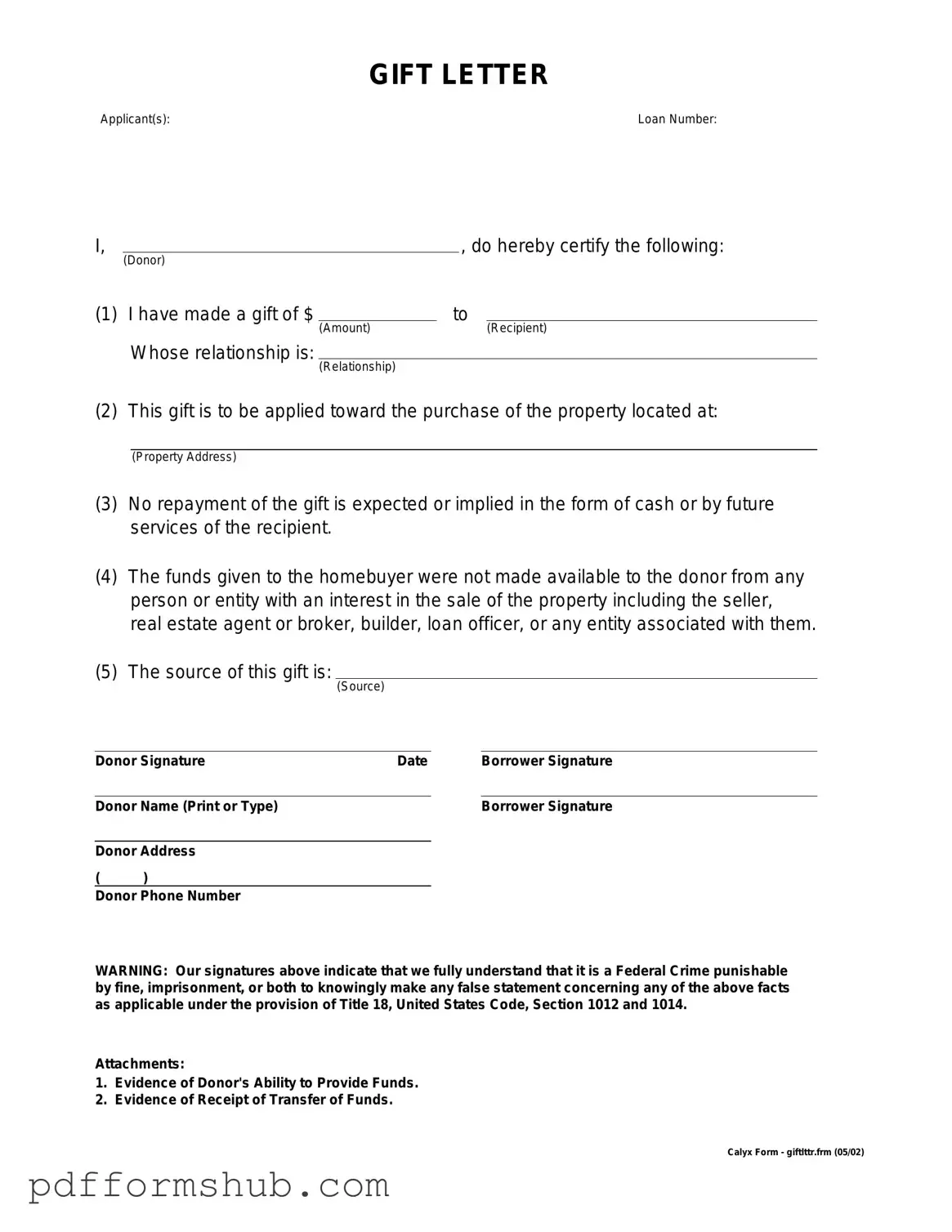Fill in Your Gift Letter Form
A Gift Letter form is a document used to confirm that a monetary gift has been given to an individual, often for the purpose of assisting with a home purchase or other significant financial transaction. This letter provides clarity to lenders about the source of funds, ensuring that the gift is not a loan that requires repayment. Understanding how to properly fill out this form is essential for a smooth transaction; start by clicking the button below to get started.
Customize Form
